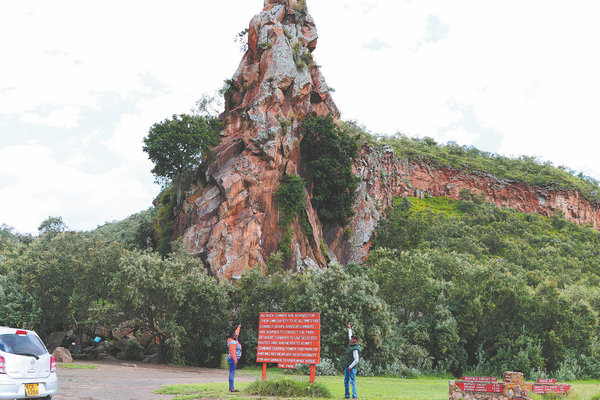

For a popular destination for both local and international tourists, the first thing that strikes visitors to Hell's Gate National Park in Kenya's Rift Valley province is its odd name. Many theories have been put forward to try to explain why the picturesque park was named Hell's Gate.
According to local legend, many years ago, a number of Maasai tribesmen were buried alive at the site when nearby Mount Longonot erupted. The Maasai are a seminomadic and pastoral tribe that occupies East African plains stretching from Kenya to Tanzania.
Charles Nkaiseri, a local guide at the park and a member of the Maasai tribe said that after the tragedy, the Maasai came up with the name Enee Meneng'a which was later translated by European settlers as "Hell".
"The park is situated in a belt rich in volcanic activity and due to powerful volcanic forces, which have shaped the national park from below for centuries, the Maasai felt like evil forces might be responsible for the resultant tragedies," Nkaiseri said.
On the other hand, some oral tales state that the name Hell's Gate was arrived at after Gustav Fischer and Joseph Thompson, two European explorers came up with the name in 1883, which referred to a narrow break in the cliffs that opens up to a clear opening in the plains of the park. According to Nkaiseri, the narrow gorge was once a tributary of a prehistoric lake that fed early humans in the Rift Valley.
However, official records like those held by the UNESCO World Heritage Convention indicate that the name Hell's Gate is derived from the most impressive feature in the park, the Ol Jorowa Gorge, which runs through the middle of the park. The gorge formed the overflow of nearby Lake Naivasha between lower and middle Cambrian times.